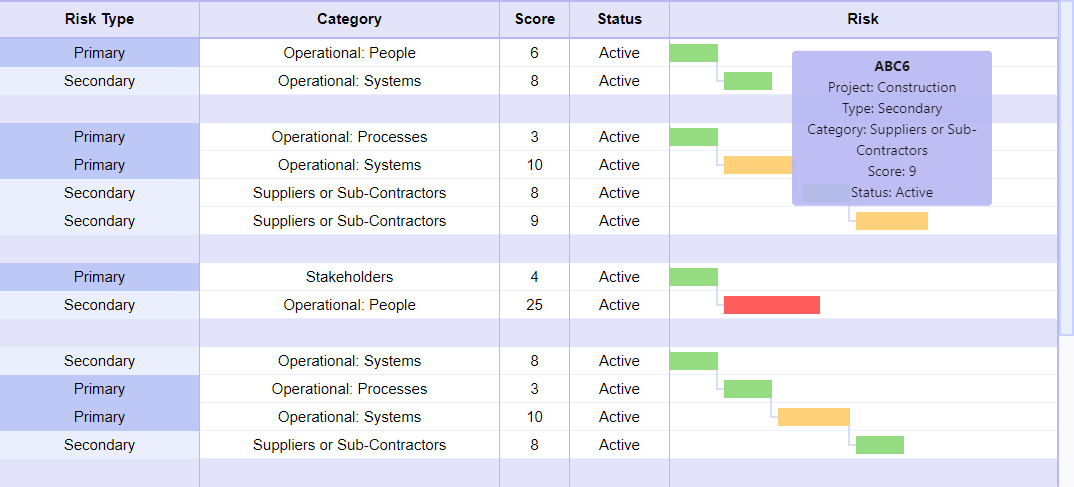
A good deal of AdaptivePPPM2.0's patent-pending methodology relates to its improved handling of project, critical and risk
dependencies. Let's consider the limitations of standard approaches:
Wedding Planning
◾ Select flowers: parent/child task
◾ Select flower colour: child/grandchild task
➤ Colour impacts the backdrop, bridesmaid party etc.
Large Real Estate Development
◾ Multiple residential buildings, offices, mixed-use and leisure facilities
◾ Select silver/platinum to represent prestige
➤ Stainless steel in kitchens, office bathrooms and investor pitch books.
Colour should be selected early on.
General Task Dependency
◾ Assume Task1 depends on Task2 finishing
◾ Does all task2 have to finish, or only part of it?
➤ Current methods of handling dependencies
fail to handle any of these issues or related updates, leaving
Project/Product Managers with one hand tied behind their backs.
| Change | Benefit |
|---|---|
| 4 Levels of Tasks: | Projects can be split into topics: grandparent (Level 1/L1), parent task (Level 2/L2), child task (Level 3/L3) and optionally grandchild task (Level 4/L4) |
| Comprehensive Handling of Dependencies: | 7 Types of Dependencies can be applied between any parent, child or grandchild task of any project, program or portfolio up to DepthN.
Most software firms offer only 1-4 dependency types and restrict this to dependencies between parent task only and further restrict this to dependencies within single projects. Very few cover dependencies between projects and nobody else offers dependencies between any parent (L2), child (L3) and grandchild (L4) tasks, from across any project, including projects belonging to different programs or portfolios: ◾ Finish-Start: The first task must finish before the next task can start: e.g. Finish sanding a wall, before painting a room. ◾ Start-Finish: The first task cannot finish before the next task starts: e.g. Make sure the new system is up and running before shutting down the legacy (existing) system. ◾ Start-Start: Both tasks must start together or the first task should start before the next task can start: e.g. Lay down floor covers before starting to paint. ◾ Finish-Finish: Both tasks must finish together or the first task must finish before the successor task can finish: e.g. Install a printer driver then plug in the printer. Neither works without the other. ◾ Circular: Both tasks are dependent on one another: e.g. A happy marriage depends on both parties. ◾ Lead-Start by X days: The successor task starts X days after the first task starts: e.g. Allow one developer X days to start one section, before another developer starts coding a related section. ◾ Lead-End by Y days: The successor task finishes Y days after the first task finishes: e.g. Let paint dry for X days before placing furniture. |
| Risk Dependencies: | Select any risk, across any project, program and portfolio and create DepthN risk dependencies. Display in a visualisation |
| Critical Tasks & Critical EVM: | Tasks can be marked as Critical, with Critical Dependencies (processes, people, material and equipment), as well as Critical Earned Value. The well-known Pareto 80-20 rule was applied. Just as 20% of clients may produce 80% of profits, a small percentage of tasks are critical and have the greatest impact. This pruning helps us focus on what matters most, whether people, processes, materials or equipment, as our Critical Tasks are much more likely to have a greater impact on Earned Value |

